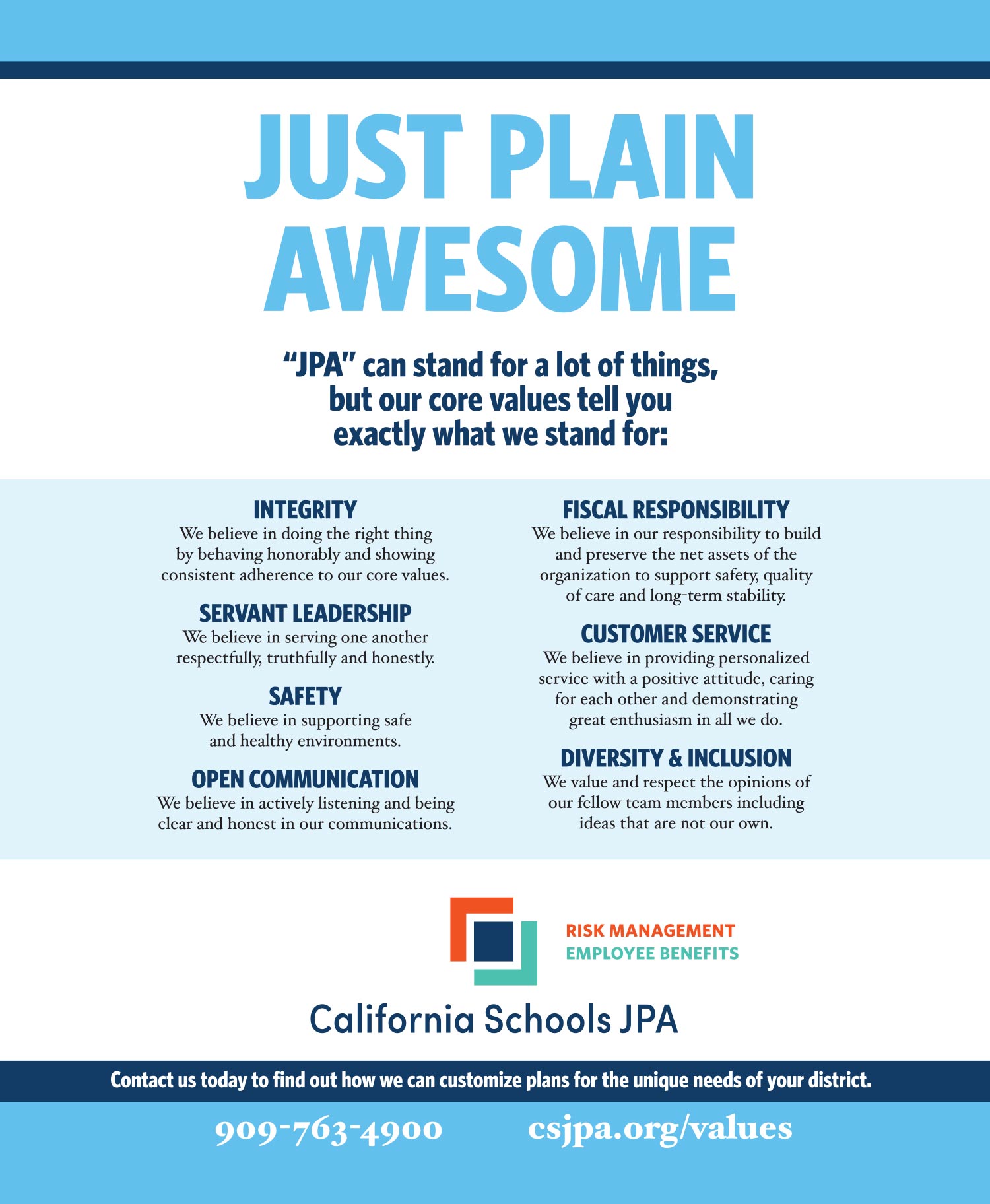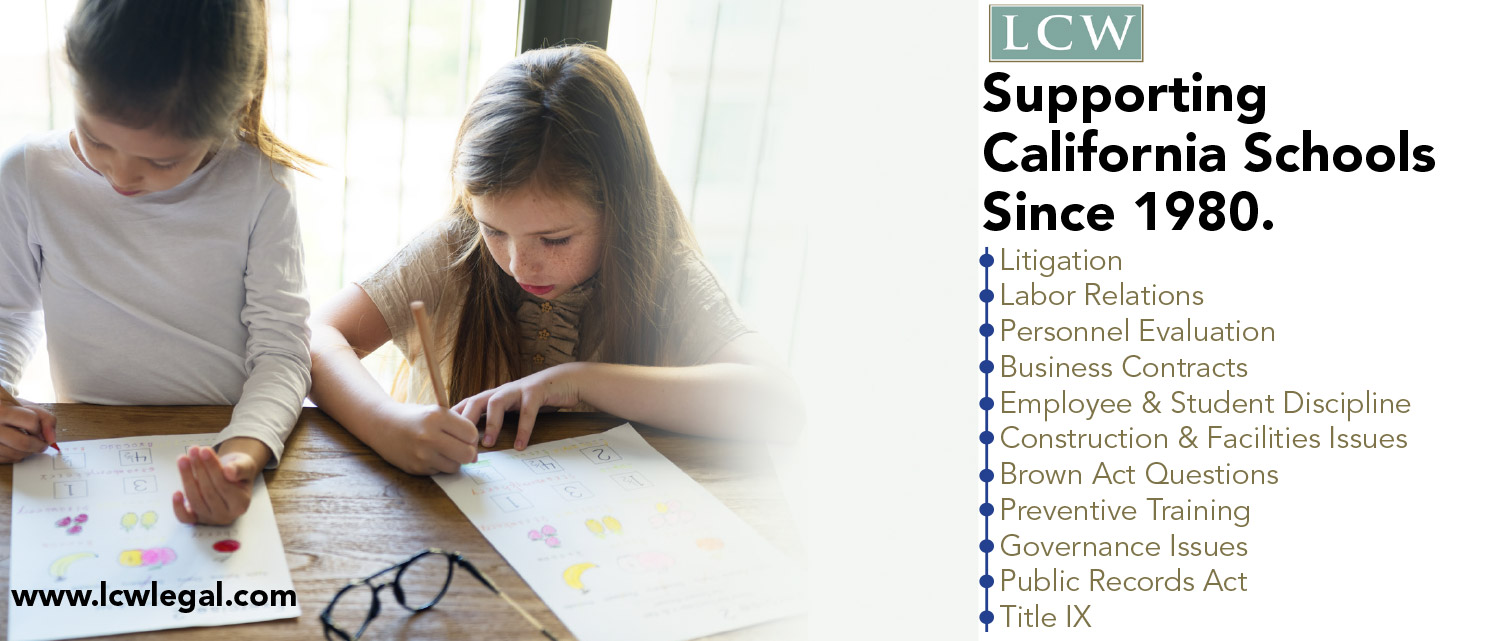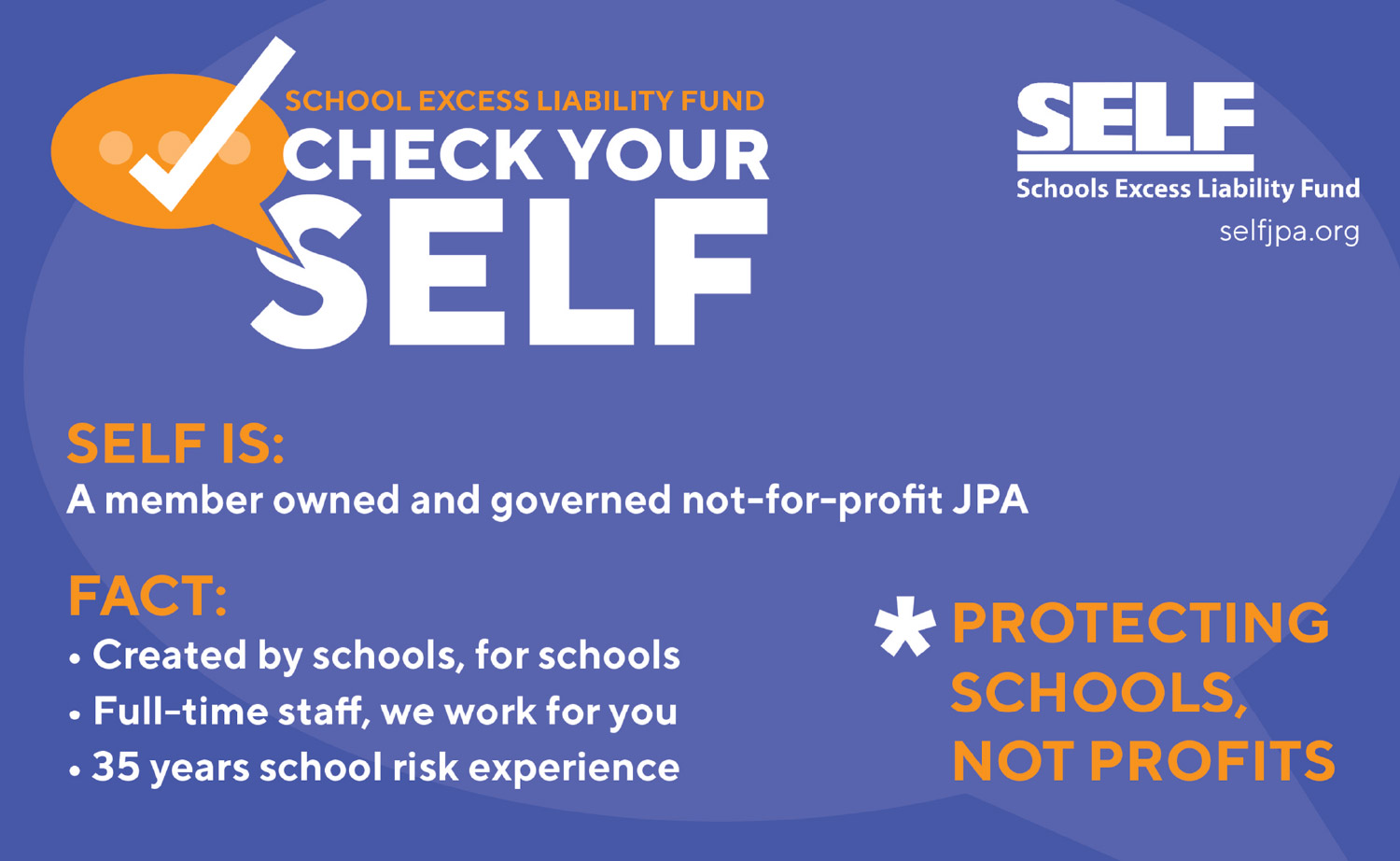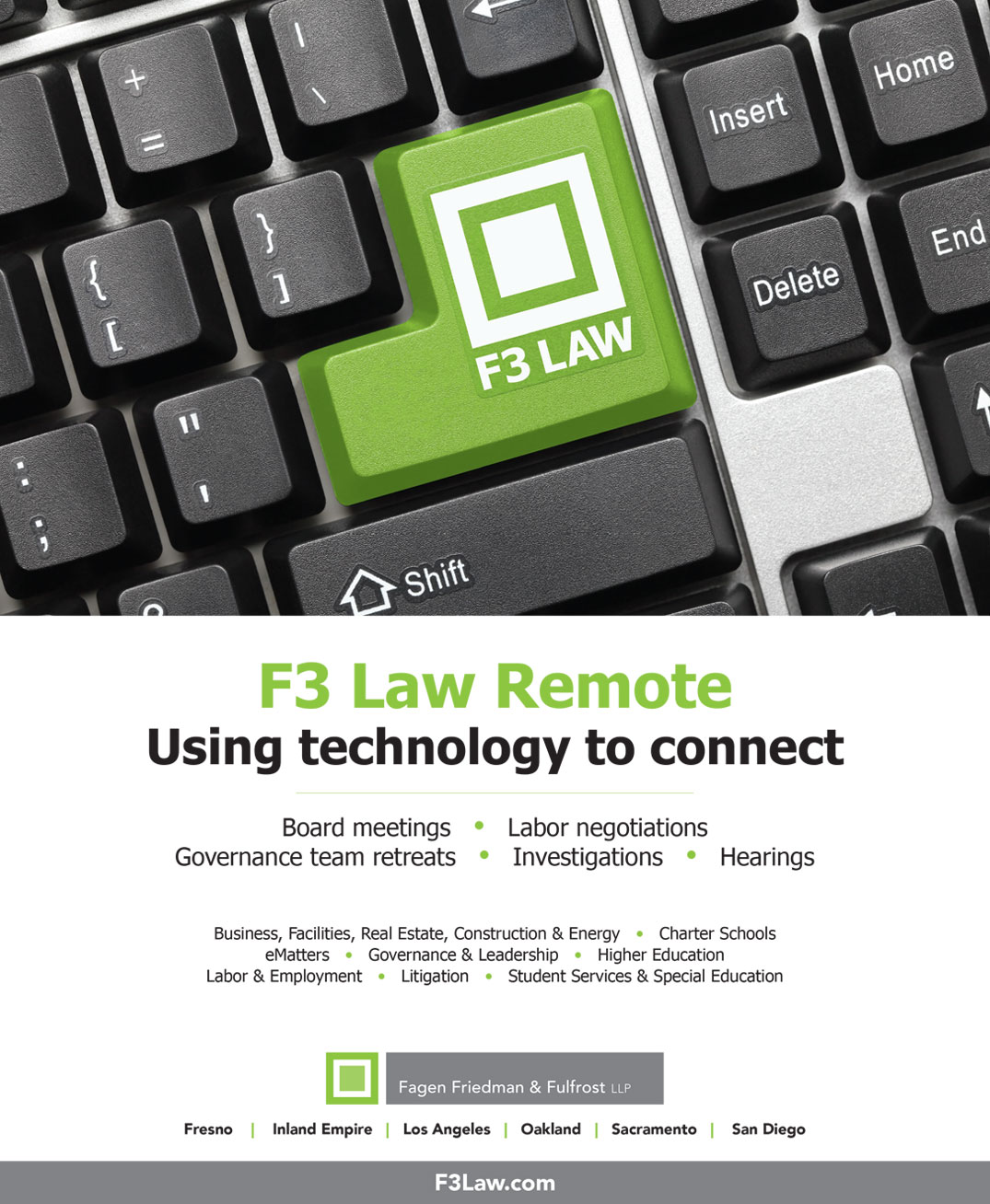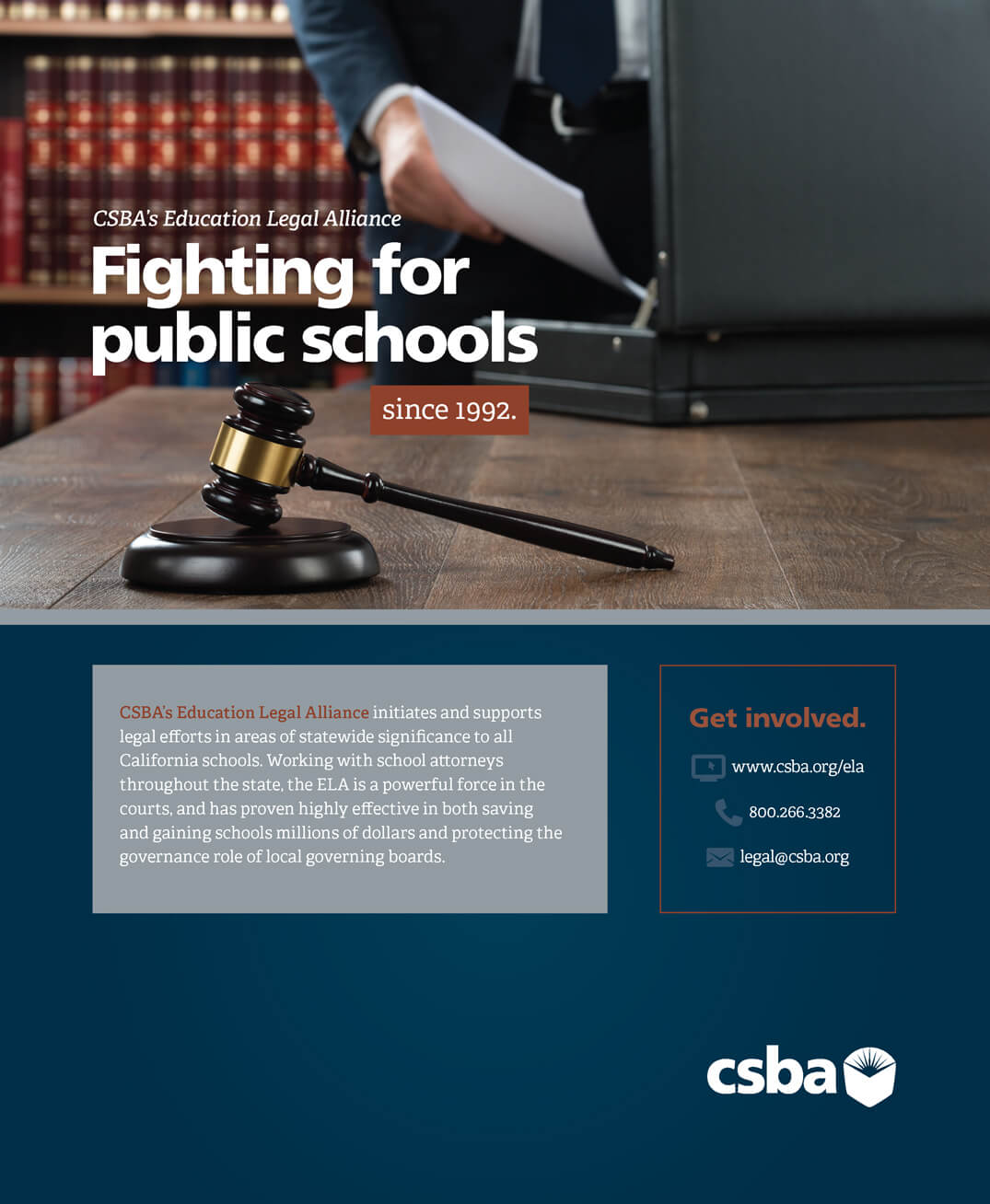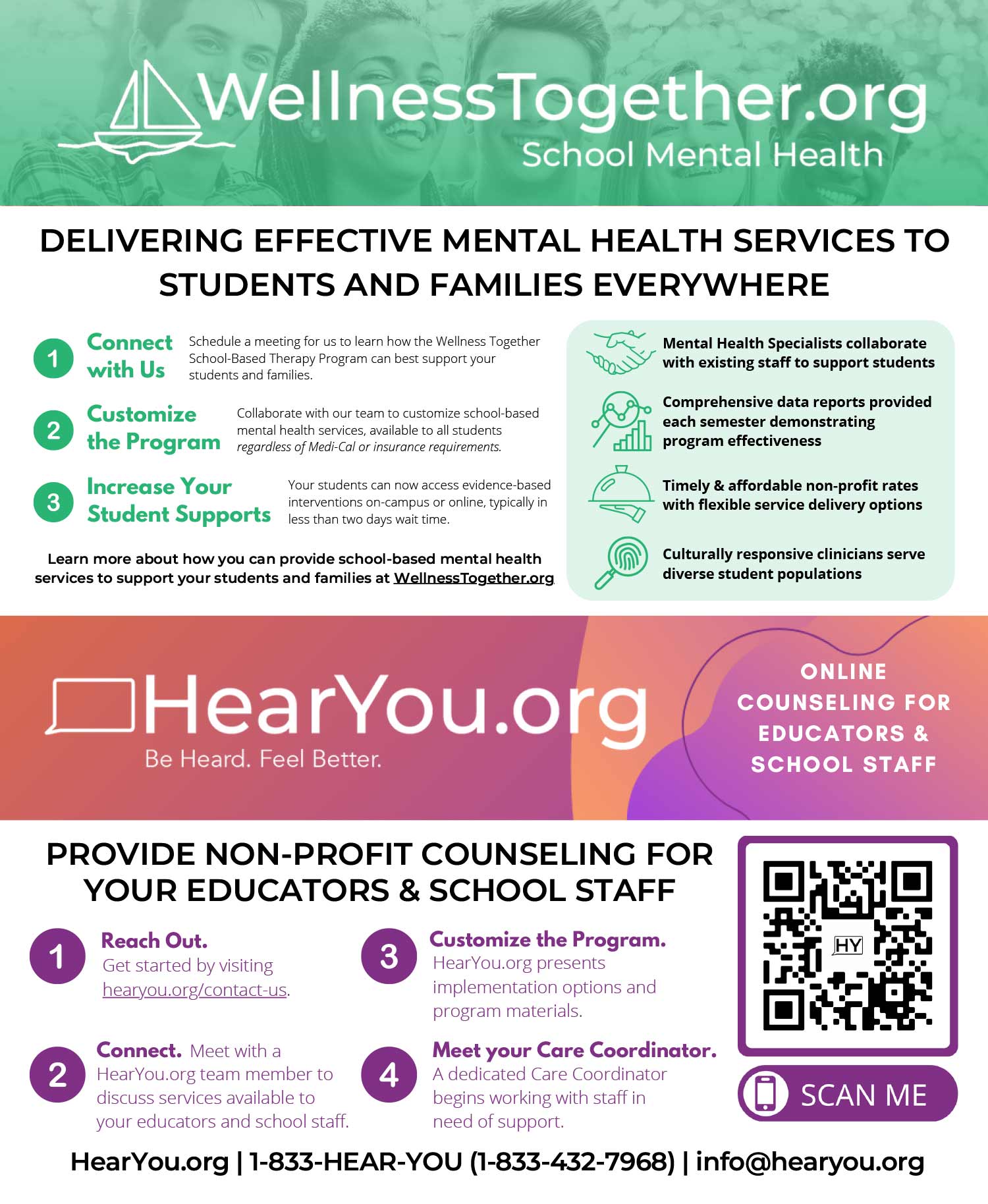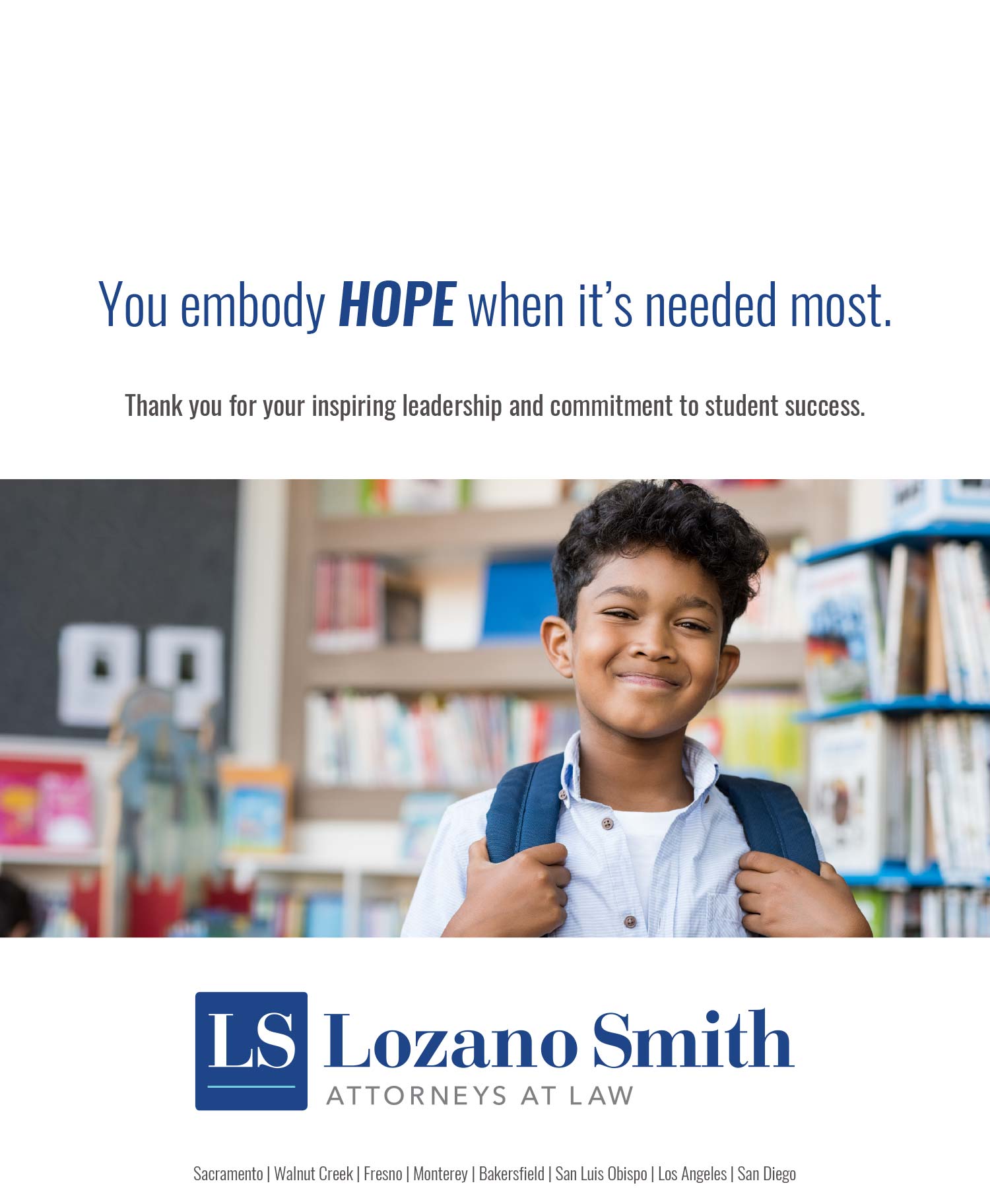
Fall 2021
A more traditional, but still uncertain, back-to-school experience expected for fall
by Heather Kemp
As state-run juvenile justice centers close, county offices are ready to support students with compassion and community resources
by Alisha Kirby
by Kimberly Sellery
by Vernon M. Billy
by Mike Ambrose
by Sepideh Yeoh, Teri Vigil and Liz Dorn Parker
by Rebecca Starkins
by Dr. Darshana Patel and Dr. Marian Kim Phelps
Interview with Adam Escoto
Cindy Marten, U.S. Deputy Education Secretary
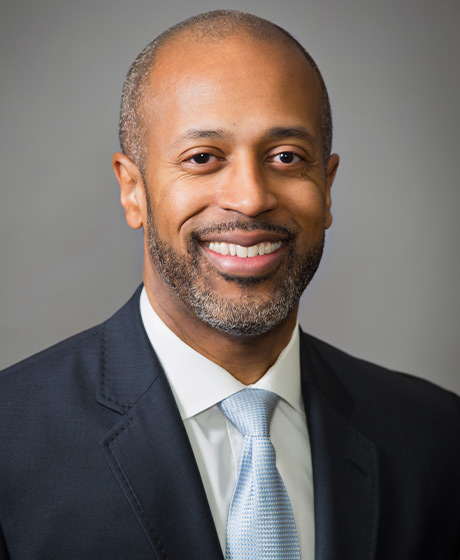
he path of public education in the United States has been shaped, in part, by landmark legal cases such as Brown v. Board of Education, Lemon v. Kurtzman and Plyler v. Doe. Closer to home, Mendez v. Westminster and Serrano v. Priest have made an enduring impact on California’s school system. So, while litigation is never the first option for the change our schools desire, it is a powerful last resort.
The ELA’s success has prompted many CSBA members to ask for assistance on more routine, yet vitally important matters that impact governance, student achievement, the conditions of children and district finances.

Region 1, Del Norte County USD
Sherry Crawford
Region 2, Siskiyou COE
A.C. “Tony” Ubalde, Jr.
Region 3, Vallejo City USD
Renee Nash
Region 4, Eureka Union SD
Alisa MacAvoy
Region 5, Redwood City ESD
Darrel Woo
Region 6, Sacramento City USD
Yolanda Peña Mendrek
Region 7, Liberty Union HSD
Region 8, Manteca USD
Tami Gunther
Region 9, Atascadero USD
Kathy Spate
Region 10, Caruthers USD
Sabrena Rodriguez
Region 11, Ventura USD
William Farris
Region 12, Sierra Sands USD
Meg Cutuli
Region 15, Los Alamitos USD
Karen Gray
Region 16, Silver Valley USD
Region 17, Solano Beach SD
Wendy Jonathan
Region 18, Desert Sands USD
Albert Gonzalez
Region 20, Santa Clara USD
Scott Schmerelson
Region 21, Los Angeles USD
Nancy Smith
Region 22, Palmdale SD
Helen Hall
Region 23, Walnut Valley USD
Leighton Anderson
Region 24, Whittier Union HSD
Director-at-Large African American,
Monterey Peninsula USD
Crystal Martinez-Alire
Director-at-Large American Indian,
Elk Grove USD
Amy Koo
Director-at-Large Asian/Pacific Islander,
Belmont-Redwood Shores SD
Bruce Dennis
Director-at-Large County, Riverside COE
Joaquín Rivera
Director-at-Large Hispanic, Alameda COE
Rick Shea
CCBE President, San Diego COE
Region 1, Del Norte County USD
Sherry Crawford
Region 2, Siskiyou COE
A.C. “Tony” Ubalde, Jr.
Region 3, Vallejo City USD
Renee Nash
Region 4, Eureka Union SD
Alisa MacAvoy
Region 5, Redwood City ESD
Darrel Woo
Region 6, Sacramento City USD
Yolanda Peña Mendrek
Region 7, Liberty Union HSD
Stephen J. Schluer
Region 8, Manteca USD
Tami Gunther
Region 9, Atascadero USD
Kathy Spate
Region 10, Caruthers USD
Sabrena Rodriguez
Region 11, Ventura USD
William Farris
Region 12, Sierra Sands USD
Meg Cutuli
Region 15, Los Alamitos USD
Karen Gray
Region 16, Silver Valley USD
Debra Schade
Region 17, Solana Beach SD
Wendy Jonathan
Region 18, Desert Sands USD
Albert Gonzalez
Region 20, Santa Clara USD
Scott Schmerelson
Region 21, Los Angeles USD
Nancy Smith
Region 22, Palmdale SD
Helen Hall
Region 23, Walnut Valley USD
Leighton Anderson
Region 24, Whittier Union HSD
Bettye Lusk
Director-at-Large African American,
Monterey Peninsula USD
Crystal Martinez-Alire
Director-at-Large American Indian,
Elk Grove USD
Amy Koo
Director-at-Large Asian/Pacific Islander,
Belmont-Redwood Shores SD
Bruce Dennis
Director-at-Large County, Riverside COE
Joaquín Rivera
Director-at-Large Hispanic, Alameda COE
Rick Shea
CCBE President, San Diego COE
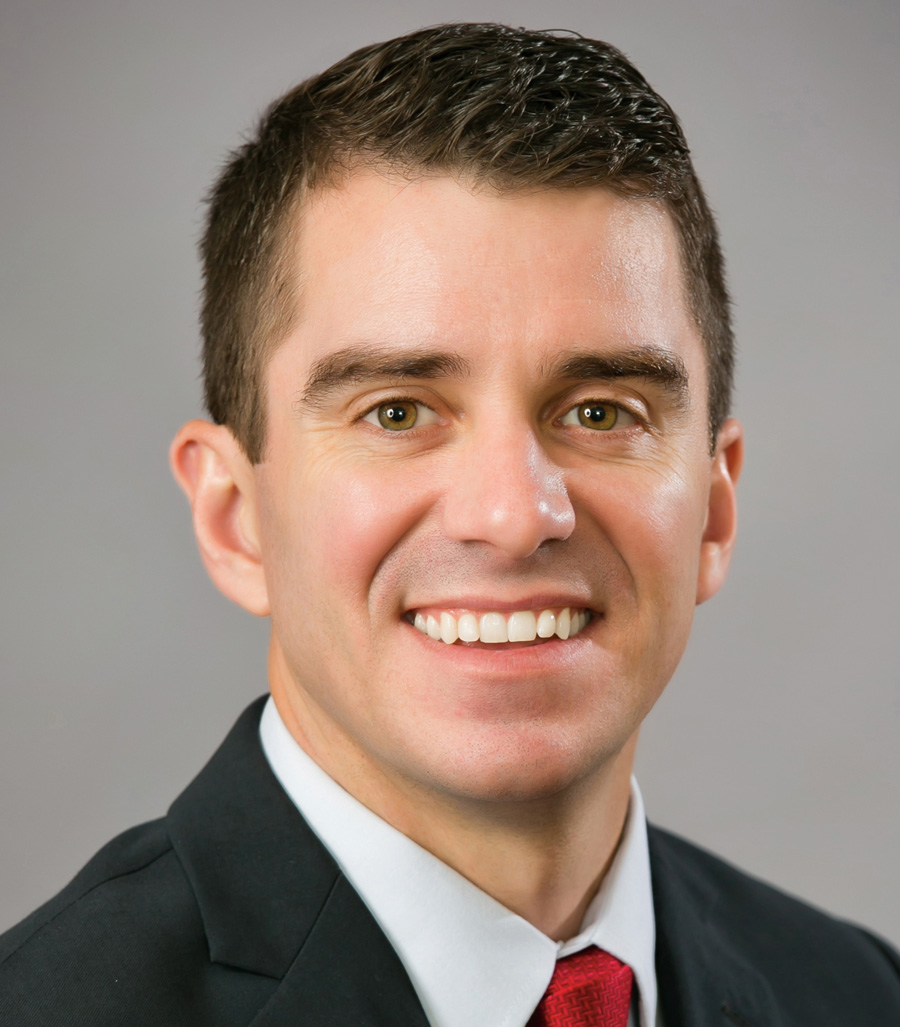
legal insights
U.S. Supreme Court affirms school violated student’s First Amendment rights
This decision still allows schools to regulate off-campus speech under certain circumstances
n June 23, 2021, in Mahanoy Area School District v. B. L., the United States Supreme Court issued a highly anticipated opinion addressing a public school’s ability to regulate off-campus student speech.

Chief Information Officer
Troy Flint, tflint@csba.org
Managing Editor
Kimberly Sellery, ksellery@csba.org
Marketing Director
Andy Rolleri, arolleri@csba.org
Staff Writers
Heather Kemp, hkemp@csba.org
Alisha Kirby, akirby@csba.org
Graphic Design Manager
Kerry Macklin, kmacklin@csba.org
Senior Graphic Designer
Mauricio Miranda, mmiranda@csba.org
Marketing Specialist
Isabella Dalton, idalton@csba.org
Circulation and Advertising
csba@csba.org
CSBA OFFICERS
Dr. Susan Heredia, Natomas USD
President-elect
Vacant
Vice President
Susan Markarian, Pacific Union ESD
Immediate Past President
Xilonin Cruz-Gonzalez, Azusa USD
CEO & Executive Director
Vernon M. Billy
Articles submitted to California Schools are edited for style, content and space prior to publication. Views expressed are those of the authors and do not necessarily represent CSBA policies or positions. Articles may not be reproduced without written permission of the publisher. Endorsement by CSBA of products and services advertised in California Schools is not implied or expressed.


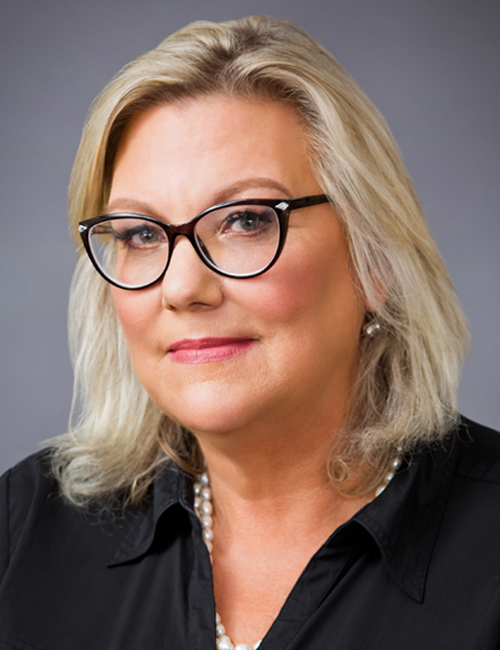
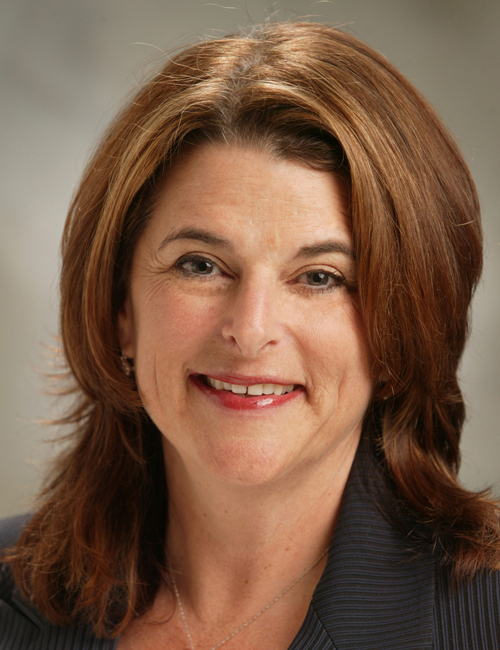

How does professional development grow the leadership of the board?
class act Best practices in action
Best practices in action

Best practices in action

The program planted roots at the Southern California district in 2016 after roughly a year of planning, according to Farm to School Coordinator Anna Jackson. With a large agricultural population in the area, student voices inspired the formation of the program, which prioritizes nutrition, school gardens, locally grown food and leadership.
“They basically said that they wanted this program and more fresh fruits and vegetables and school gardens, so that put the wheels in motion for us to come in and create the program,” Jackson recalled. “I’m proud of our district and how much it values student input.”
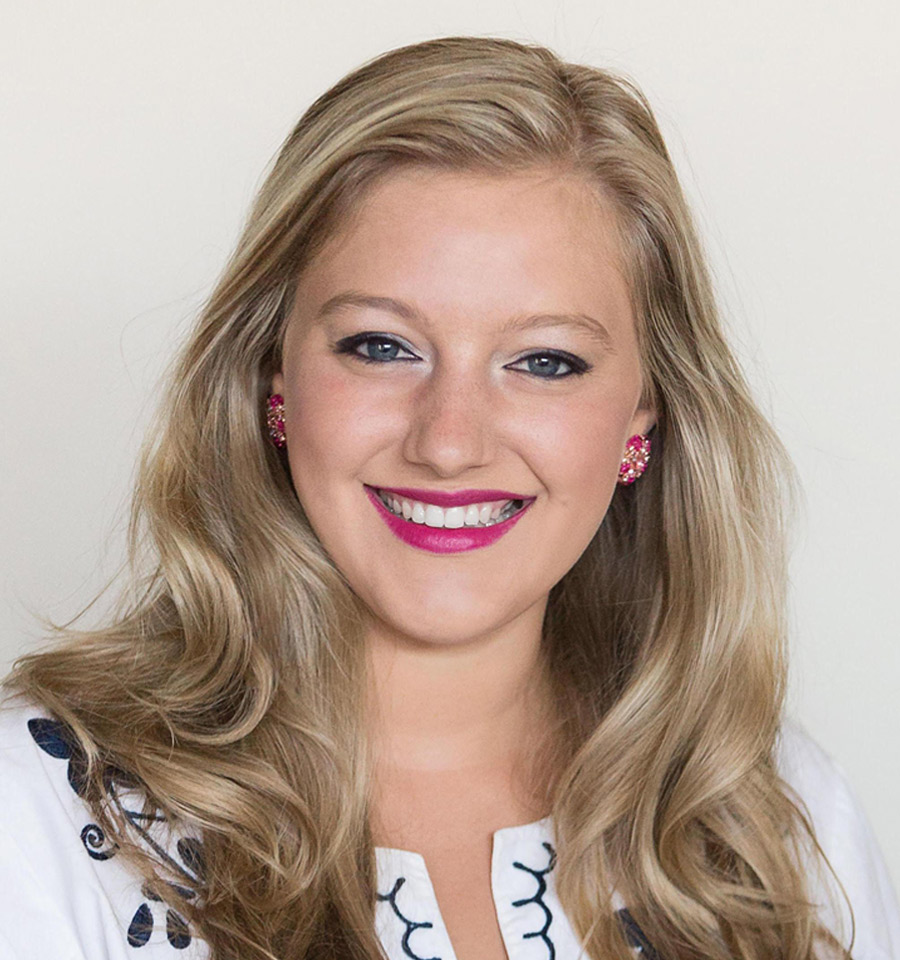
igned into law by Gov. Gavin Newsom in 2019, Senate Bill 328 (Portantino, D-Pasadena) requires that, by the 2022–23 school year, districts implement bell schedules that begin no earlier than 8:30 a.m. for high schools and 8 a.m. for middle schools.
Moving to a new bell schedule is a district decision, under board direction, that is designed to put student needs first, fulfill a desire to switch to a block schedule and fulfill the mandate in Senate Bill 328. In addition, one of the culture objectives in Beverly Hill Unified School District’s strategic plan is to “implement a new bell schedule that builds in daily dedicated time to address the needs of the developing district culture” and “build in time to address ethics, empathy, and emotional health through collaboration and communication.”
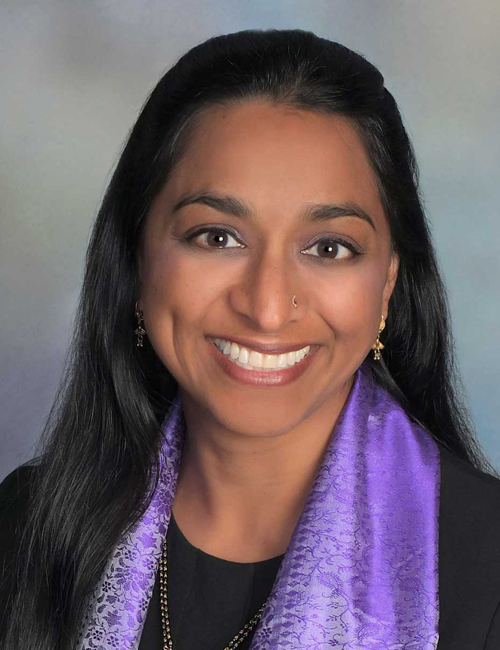
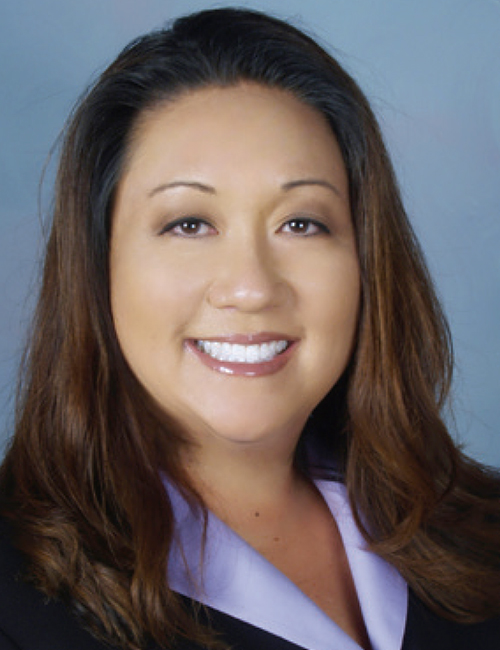


One district’s journey toward racial equity and inclusion
The Poway Unified School District is an award-winning TK-12 school district in the northern suburbs of San Diego, serving 36,500 students in 39 schools.
It was May 2020, the pandemic was still in its early stages here in the U.S., and we were all navigating distance learning and drive-thru celebrations. Candidly speaking, any equity and anti-bias work our district had initiated over the last couple years had taken a back seat to figuring out how to completely reinvent how we educate our students. As a board, we were meeting via Zoom, grappling with extremely difficult decisions and ever-changing public health guidance about when and how to reopen our campuses.

How long have you been a board member and what inspired you to run?
On Jan. 23, 2019, the Morgan Hill Unified School District Board appointed me to fill the trustee-area vacancy representing District 7. Two years later I ran for the seat unopposed. My inspiration was that trustee area 7 mirrored my life experiences with its high concentration of children on free and reduced-price lunch and its large population of Latino children and families. As a former K-12 site administrator and assistant superintendent, I believed I brought a unique perspective that would complement the school district’s governance body, a perspective that has enabled me to effectively reach out to and collaborate with a broad spectrum of individuals and groups in our community.
How have your past experiences shaped the way you view California’s educational system?
As a student I used education to change my life. I am a product of the state’s foster care system. I was placed in many foster homes, too many to keep count, from the age of 10 until I aged out at 18. In the early years of foster care, I struggled in school both academically and socially. I was involved in gang activities and felt completely disengaged from the three middle schools and seven high schools that I attended.
While in high school I learned about the importance of school and community partnerships when a local nonprofit reached out to the city’s high schools recruiting Latino students for a youth leadership program. This unique partnership was the foundation for recognizing and honoring my racial and cultural identity. Then and now I believe these partnerships should be the norm in supporting students. Early in my career as a site administrator I recognized that schools partnering with community-based organizations was an effective way of engaging the whole community to strengthen student and family resiliency.
Who was one adult you looked up to growing up and why?
One day during my sophomore year of high school I was introduced to Mr. Sanchez, my new social worker. He was tall, skinny, wore glasses, a suit and tie, and was my first and only Latino social worker. For a long while, I was not very trusting nor communicative with Mr. Sanchez. With time, however, I realized that Mr. Sanchez would be the adult that I would look up to, admire and respect. He was my advocate, consultant and a broker of resources. Mr. Sanchez helped me understand and accept that not all of my “streetwise survival skills” were going to transition well in school settings and that a new set of skills were essential to my success in school and in navigating my life journey.
What is one important thing you have learned from attending CSBA’s Masters in Governance courses?
The most important thing that I have learned in MIG is the distinction between the terms and practices of “governance” and “good governance.” Governance describes a process of decision-making and the process by which decisions are implemented or not. Good governance, on the other hand, add elements of equity and social justice, stakeholder inclusion, strategic thinking, accountability and fairness. Many of these elements, I believe, are also those that support social learning and lead to resilient school communities.

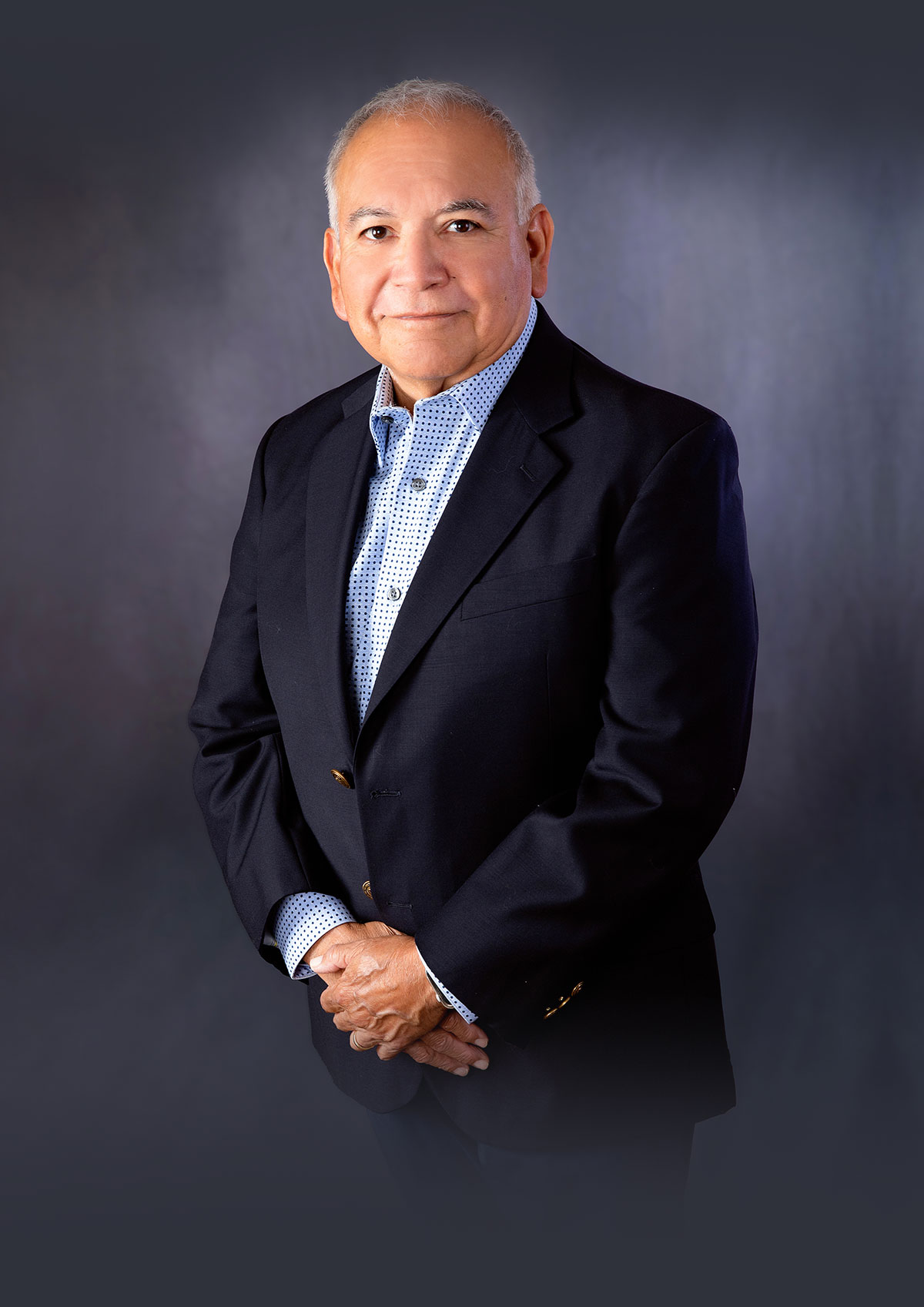
How long have you been a board member and what inspired you to run?
On Jan. 23, 2019, the Morgan Hill Unified School District Board appointed me to fill the trustee-area vacancy representing District 7. Two years later I ran for the seat unopposed. My inspiration was that trustee area 7 mirrored my life experiences with its high concentration of children on free and reduced-price lunch and its large population of Latino children and families. As a former K-12 site administrator and assistant superintendent, I believed I brought a unique perspective that would complement the school district’s governance body, a perspective that has enabled me to effectively reach out to and collaborate with a broad spectrum of individuals and groups in our community.
How have your past experiences shaped the way you view California’s educational system?
As a student I used education to change my life. I am a product of the state’s foster care system. I was placed in many foster homes, too many to keep count, from the age of 10 until I aged out at 18. In the early years of foster care, I struggled in school both academically and socially. I was involved in gang activities and felt completely disengaged from the three middle schools and seven high schools that I attended.
While in high school I learned about the importance of school and community partnerships when a local nonprofit reached out to the city’s high schools recruiting Latino students for a youth leadership program. This unique partnership was the foundation for recognizing and honoring my racial and cultural identity. Then and now I believe these partnerships should be the norm in supporting students. Early in my career as a site administrator I recognized that schools partnering with community-based organizations was an effective way of engaging the whole community to strengthen student and family resiliency.
Who was one adult you looked up to growing up and why?
One day during my sophomore year of high school I was introduced to Mr. Sanchez, my new social worker. He was tall, skinny, wore glasses, a suit and tie, and was my first and only Latino social worker. For a long while, I was not very trusting nor communicative with Mr. Sanchez. With time, however, I realized that Mr. Sanchez would be the adult that I would look up to, admire and respect. He was my advocate, consultant and a broker of resources. Mr. Sanchez helped me understand and accept that not all of my “streetwise survival skills” were going to transition well in school settings and that a new set of skills were essential to my success in school and in navigating my life journey.
What is one important thing you have learned from attending CSBA’s Masters in Governance courses?
The most important thing that I have learned in MIG is the distinction between the terms and practices of “governance” and “good governance.” Governance describes a process of decision-making and the process by which decisions are implemented or not. Good governance, on the other hand, add elements of equity and social justice, stakeholder inclusion, strategic thinking, accountability and fairness. Many of these elements, I believe, are also those that support social learning and lead to resilient school communities.


With summer instruction well underway, local educational agencies waited to hear from state leaders about COVID-19-related safety requirements for the fall.
At the time of this writing, the California Department of Public Health was still requiring all individuals, vaccinated or not, to wear a mask while indoors at school campuses, child care facilities and other youth-centered settings per its June 15 public health order.


“Masks are one of the most effective and simplest safety mitigation layers to prevent in-school transmission of COVID-19 infections and to support full time in-person instruction in K-12 schools,” the department stated.
Home

Justice
Home
esenia’s story is one of many that advocates and those who work with young people point to when discussing the necessity of moving away from punitive measures for adolescent crime and toward practices and interventions that promote healing, both for young people and their communities.
“I think people still maintain very black and white notions of who’s deserving of redemption or second chances. But something that we need to be considering is that, in many cases, when did they even get their first chance?” asked Renee Menart, communications and policy analyst for the Center on Juvenile and Criminal Justice. She explained that a young person dealing with a lack of basic necessities and exposure to trauma often also lack caring and supportive relationships. “When a young person does unfortunately come into contact with the justice system, [we can] give them an opportunity to connect with people in their community and to grow with some support.”

Today, Green is board president of the Sausalito-Marin City School District, which is once again under desegregation orders, this time from former California Attorney General Xavier Becerra in an August 2019 ruling.

Today, Green is board president of the Sausalito-Marin City School District, which is once again under desegregation orders, this time from former California Attorney General Xavier Becerra in an August 2019 ruling.

is abundantly clear we are not the only district with issues related to segregation. This desegregation order is a full circle moment for me,” Green said. “I had no control of the course of action as a child, but today I am in a unique position to lead the school community to take corrective actions and be more accountable to the greater community, especially the ones who matter most — the children.”
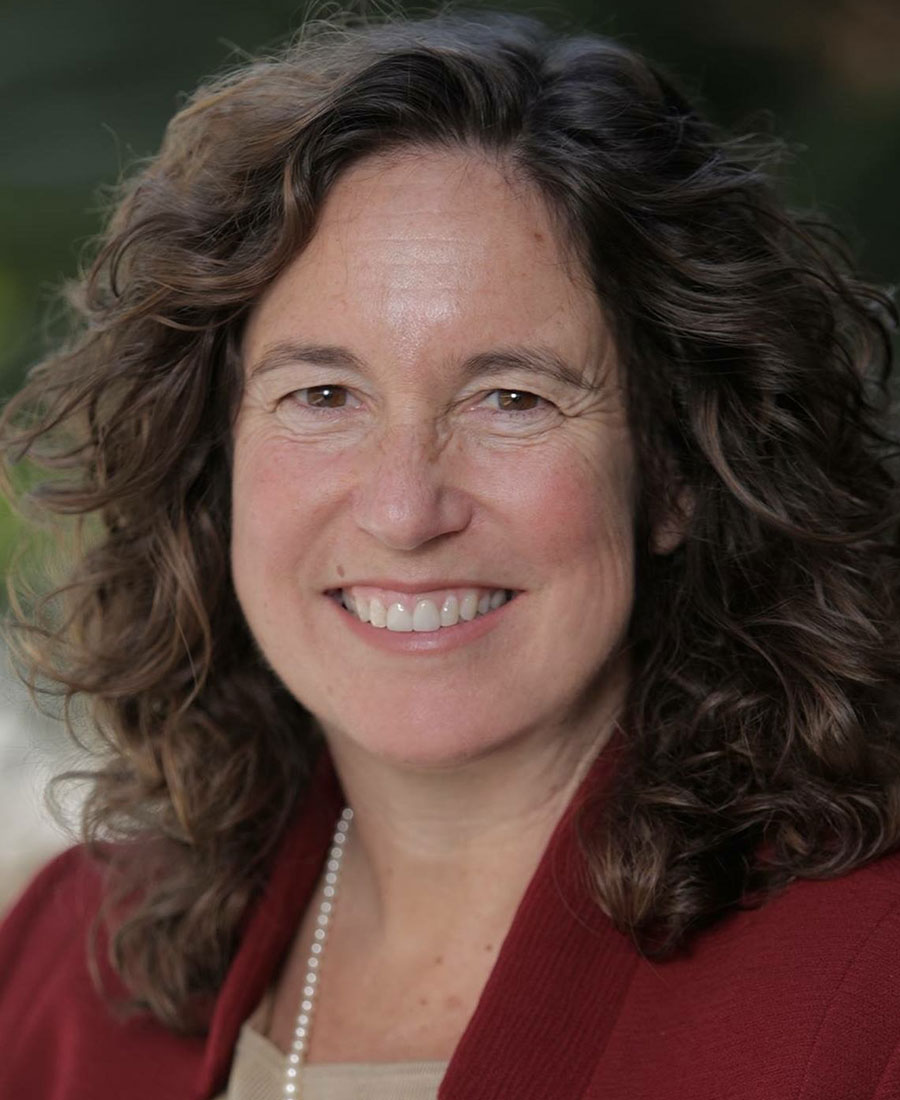
I’m not a stranger to jumps. When I became superintendent in 2013, I’d been an elementary school principal, so at that time that was considered quite the jump as well. I will say that as a superintendent, you’re a manager, and when I became superintendent there were 16,000 employees in San Diego Unified — it’s really that work over the past eight years that has prepared me for the chief operating officer functionalities of the role that I’m playing now as deputy secretary at the U.S. Department of Education.















